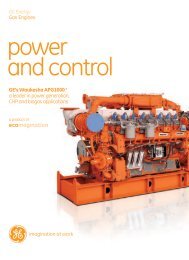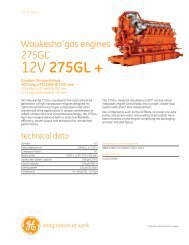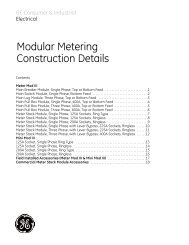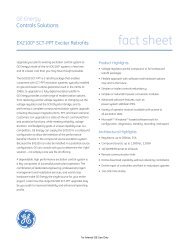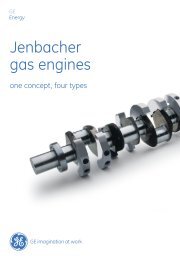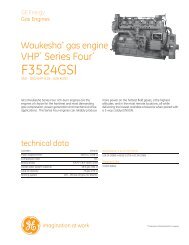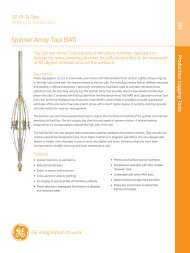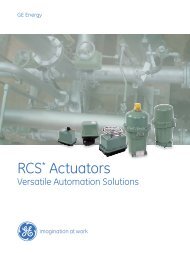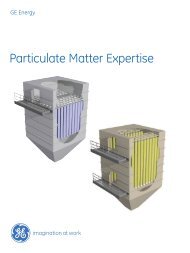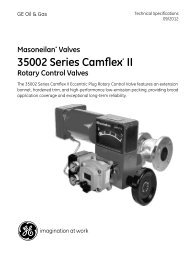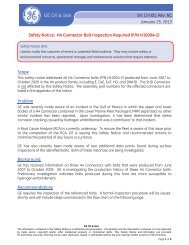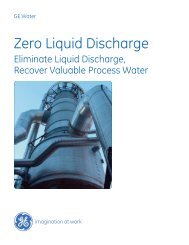Masoneilan Products SVI II ESD - GE Energy
Masoneilan Products SVI II ESD - GE Energy
Masoneilan Products SVI II ESD - GE Energy
Create successful ePaper yourself
Turn your PDF publications into a flip-book with our unique Google optimized e-Paper software.
<strong>GE</strong> <strong>Energy</strong><br />
<strong>SVI</strong> <strong>II</strong> <strong>ESD</strong> Device Description<br />
<strong>SVI</strong> <strong>II</strong> <strong>ESD</strong> Quick Start<br />
An <strong>ESD</strong> valve is a valve that is operated to ensure that the process is brought to<br />
its safe state. During normal operation, these <strong>ESD</strong> valves are typically energized<br />
to stay open. In case of an unsafe situation, the <strong>ESD</strong> valve is de-energized by the<br />
Safety System. The <strong>SVI</strong> <strong>II</strong> <strong>ESD</strong> device performs this shutdown function for Safety<br />
Instrumented Functions (SIF) that require field devices to be certified for safety<br />
related applications according to IEC61508 and is certified by TUV for use up to<br />
SIL3 with a HFT of 0 in low demand applications. It is important to note that the<br />
built-in microprocessor is used for valve diagnostics only. The microprocessor has<br />
no direct role in performing the designated safety function therefore the <strong>SVI</strong> <strong>II</strong><br />
<strong>ESD</strong> is considered a Type A device.<br />
The <strong>SVI</strong> <strong>II</strong> <strong>ESD</strong> is a valve controller that mounts on a pneumatically actuated<br />
valve assembly. Its role is to position an emergency shutdown valve to 0% or<br />
100% with a PFDavg in accordance with IEC61508 for SIL3 application.<br />
Because of its capability of monitoring data from its embedded sensors, the <strong>SVI</strong> <strong>II</strong><br />
<strong>ESD</strong> is capable of validating the health of its integral components. Also, with the<br />
ability of partially stroking the <strong>ESD</strong> valve while in normal operations (energized to<br />
stay open); it becomes possible to validate the health of the valve and actuator<br />
assembly. Periodic testing of the <strong>ESD</strong> valve reduces the PFDavg by detecting<br />
dangerous failures.<br />
Designing an SIF Using an <strong>SVI</strong> <strong>II</strong> <strong>ESD</strong><br />
The following must be taken into consideration when designing a SIF (Safety<br />
Instrumented Function) using the <strong>SVI</strong> <strong>II</strong> <strong>ESD</strong>:<br />
“Safety Function” on page 7<br />
“Environmental Limits” on page 7<br />
“Design Verification” on page 7<br />
“SIL Capability” on page 8<br />
“Connecting the <strong>SVI</strong> <strong>II</strong> <strong>ESD</strong> to the SIS Logic Solver” on page 9<br />
“General Requirements” on page 9<br />
6




